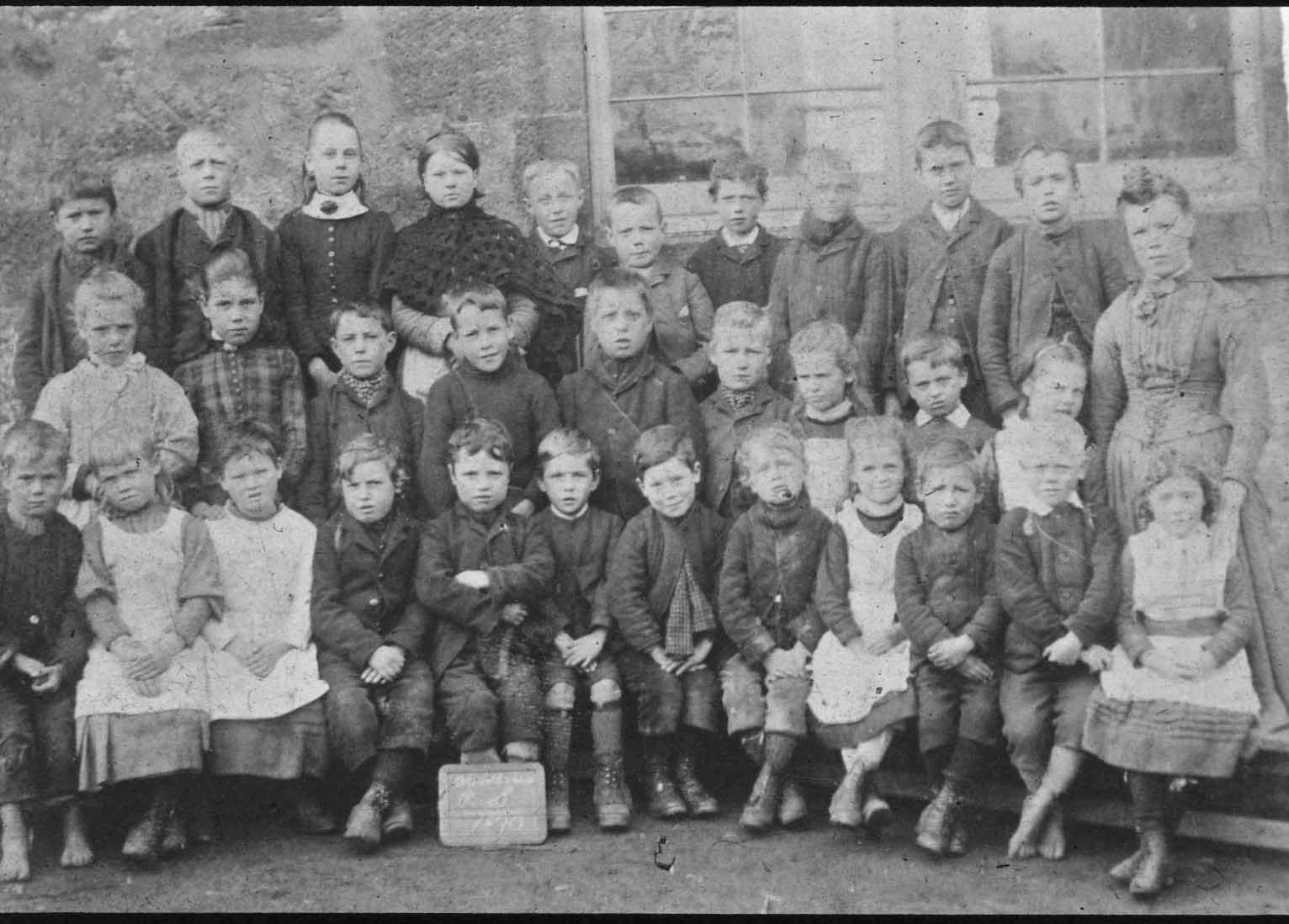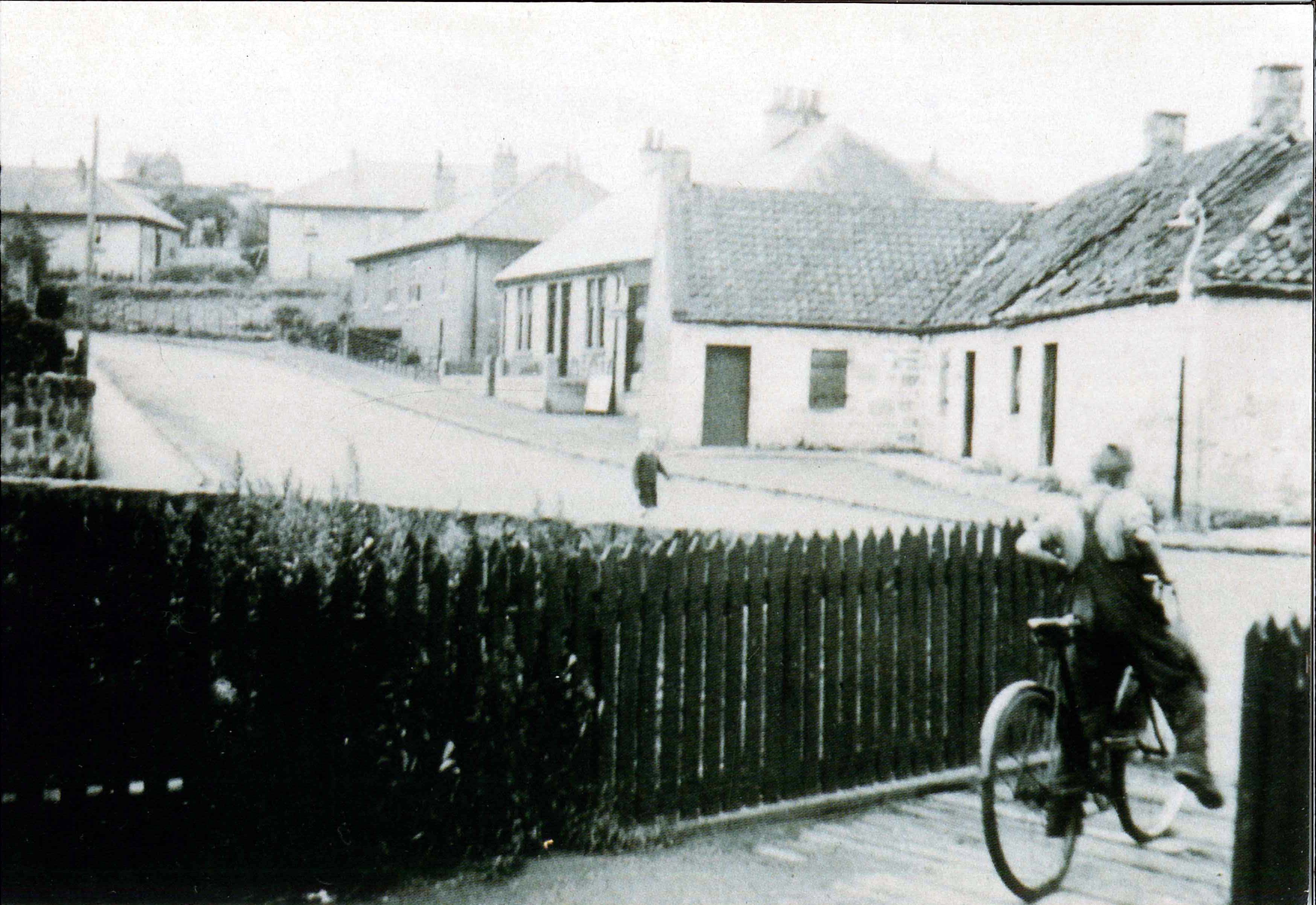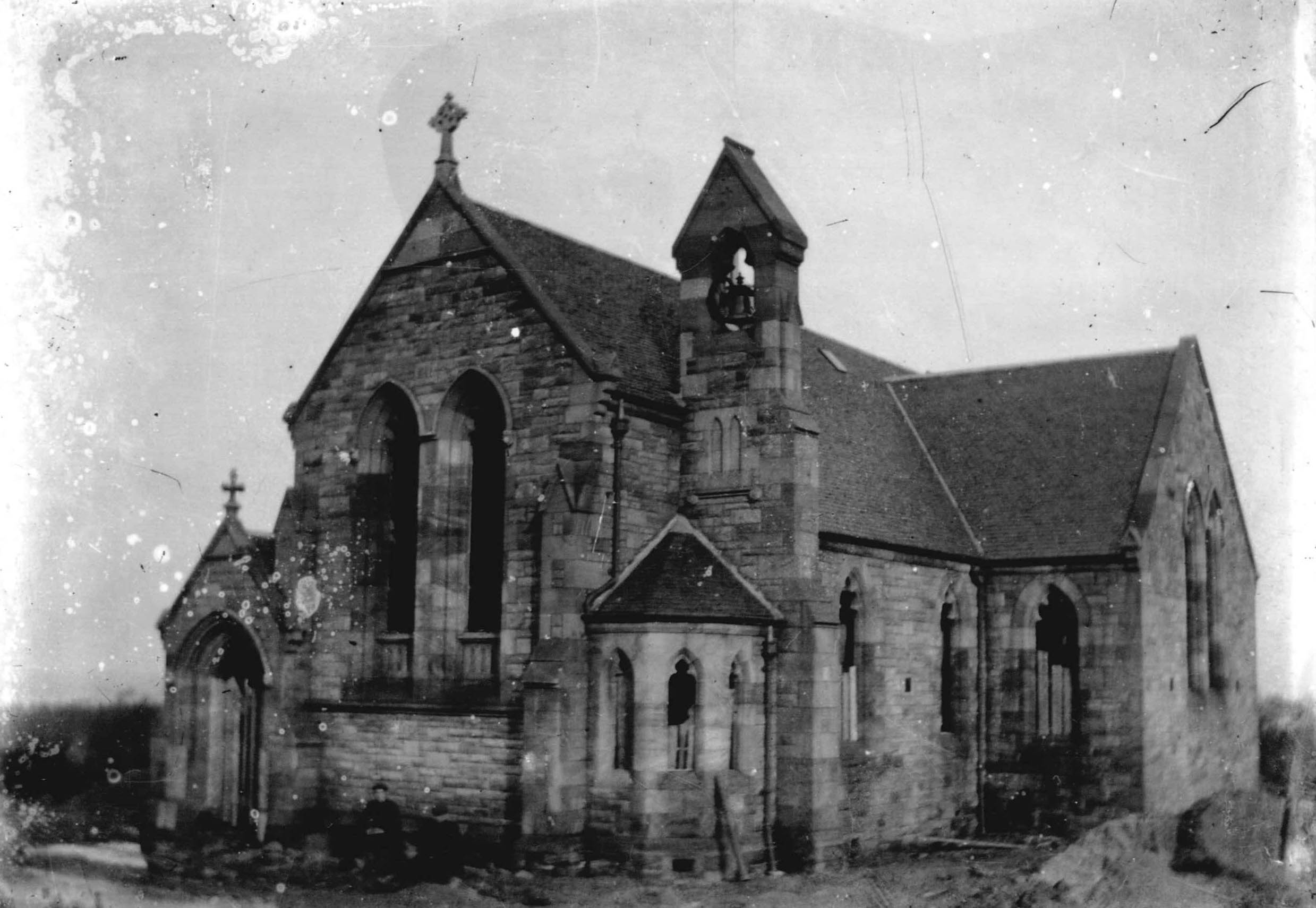Learn about Muiravonside parish and school, and the lives of children who worked in the mines and studied in the area.
Education in Muiravonside
Education has always been important to the people of the parish and many children wound their way to the Kirk every morning after the formation of the parish. The first church was built in the area in 1648 and the current church building was built in 1806 (Muiravonside Parish Church of Scotland History). From age 6 or 7, children attended the parish school six days a week, sometimes beginning at 5am (though usually 6am), with one hour breaks for breakfast and lunch (‘The Dominie’). The younger pupils worked alongside the older ones and from 1616 all children had to learn the Catechism by heart and the minister would examine the pupils on their ability to read the Bible (‘The Dominie’).
The majority of children did not progress much beyond this stage of reading. However, some older pupils would advance to arithmetic and Latin and a few to writing. Many poorer families could not afford the luxury of school, with some children never attending or only attending for two or three years. Public examinations were common throughout Scotland at the beginning of the 19th century and several parish schools prepared their more able pupils for direct entrance to university. In the Lowlands of Scotland even this basic education meant that there was almost universal literacy.
Muiravonside School
A school serving the whole parish of Muiravonside existed possibly as early as 1723, somewhere near to the parish kirk. Parliament had decreed around 30 years before that every parish had to have a schoolhouse and provide for a schoolmaster. There is a memorial stone dedicated to Thomas Greenhill, who was the Schoolmaster of the Parish for much of that time, in the churchyard. A school in the village of Muiravonside opened around 1800, a stone built into the wall in front of the new school (presumably moved after the old school became a private residence) gives the date 1817. This school closed in 1955 when a new school opened in Whitecross (Downie).
It wasn’t until 1848 that an Act of Parliament prohibited the employment of women and children underground.
fields['text']) echo $section->fields['text']; ?>
Board Members
The first Muiravonside School Board members in 1873 were: John Logan (Coalmaster, Candy), David Rodger (Bookkeeper, Falkirk), Andrew Reid (Farmer, Haining Valley), George Gray Esq. (Proprietor, Windyyett), Thomas Livingstone-Learmonth (Proprietor, Parkhall), Reverend George Keith (Minister, Muiravonside Manse), William Orr (Farmer, Boxton), M.T. Hamilton (Land Steward, Callander), J.G. Urquart (Proprietor, Vellore), and A. S. Aisling (Proprietor, Muiravonside House).
Children at Work and at School
It is difficult to say exactly who attended the school as most of the children were at work, often in the mines, where women and children were preferred (perhaps because their labour was cheaper) to men. It wasn’t until 1848 that an Act of Parliament prohibited the employment of women and children underground. Until then, men might have worked alongside their wives and five or six children. This Act wasn’t popular with the miners as they lost up to six or seven sources of income.
In 1872, the Education (Scotland) Act, which made elementary education compulsory for children aged 5-13, brought further changes to Scottish education:
“The existing parish and burgh schools were taken over by the state and managed by locally elected School Boards (anyone was allowed to stand for election as long as they had property worth £4). The new system was co-ordinated nationally by the Scotch [sic] Education Department with the curriculum emphasising the teaching of reading, writing, and arithmetic (the three ‘R’s’). The churches made a crucial contribution to the new system by handing over their schools without charge to the School Boards” (University of Edinburgh “Part 4”).
Monitorial Systems
Monitorial systems developed at the end of the 18th century in response to a shortage of teachers and the increasing number of pupils in school classes. Someone from the older and more able children would undertake the role of monitor. These children would receive additional instruction from the schoolmaster and would then instruct a group of children. An account of one school using this system described it thus:
“One half of the scholars sat at the desks with their faces to the wall, employed in learning to write or cipher, while the other half stood on the floor, either reading or practising the rules of arithmetic. The classes on the floor were arranged in groups facing the schoolmaster with a monitor keeping order over each group. At the end of an hour those at the desks would change over with those on the floor. Writing would be carried out on slates, although the older children might use paper” (Wood p.84).
Parish Schools
The schools in the Parish were: Muiravonside School (in the village of Muiravonside with accommodation for 55 children but which had 57 at this time), Drumbowie School (in the village of Standburn); and a subscription school at Avonbridge (with accommodation for 62 but had 70 at this time, only a very small part of Avonbridge is in the parish and only a few children from the parish attended the school there). There was also a school in Maddiston which was situated right in the centre of the village (variously mentioned as Maddiston School, Maddiston Classroom, Maddiston Schoolroom or Maddiston Infant School) with accommodation for 32 but had 70 at this time, and a school at Brightons (a Free Church School, which passed into the control of Polmont Parish School Board), with 94 children from Muiravonside Parish in attendance. There was a school at Linlithgow Bridge and a school for Roman Catholic children in St Anthony’s Chapel in Rumford.
Other Kinds of Education
Roughly 10 children were being educated privately and 40 children were not attending school between the ages of 5 and 13 (some of those were in employment at “public works”). Muiravonside Parish School Board was capable of providing education for 352 children (allowing eight square feet of flooring for each child).The Board believed there were more than 600 children in the Parish of school age in 1873 which was nearly double the estimate of two years previous. Towards the end of the 19th century secondary schools were developing as an identifiable sector and in 1901 the school leaving age was raised to 14. Students could leave schools with a variety of qualifications, including an Intermediate Certificate for those taking courses in industrial, commercial, rural and household subjects, and a Leaving Certificate for those intending to take up a profession. One of the sheds still survives at the bottom of the former playground on the site of the second Parish School of Muiravonside.
By David Leask of David Leask’s Maddiston Pages. With further research conducted by Rowan Berry for Falkirk Community Trust Great Place Scheme.



